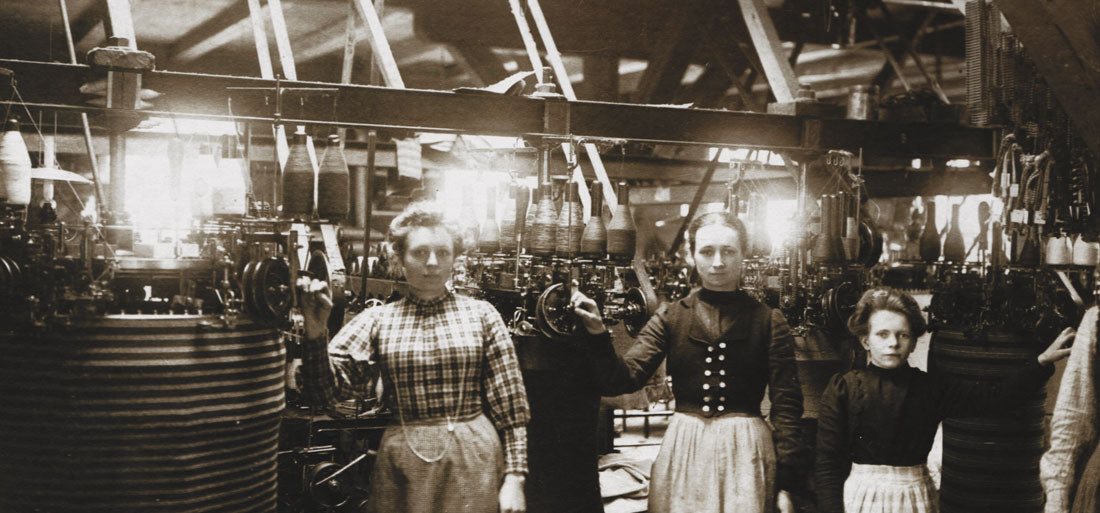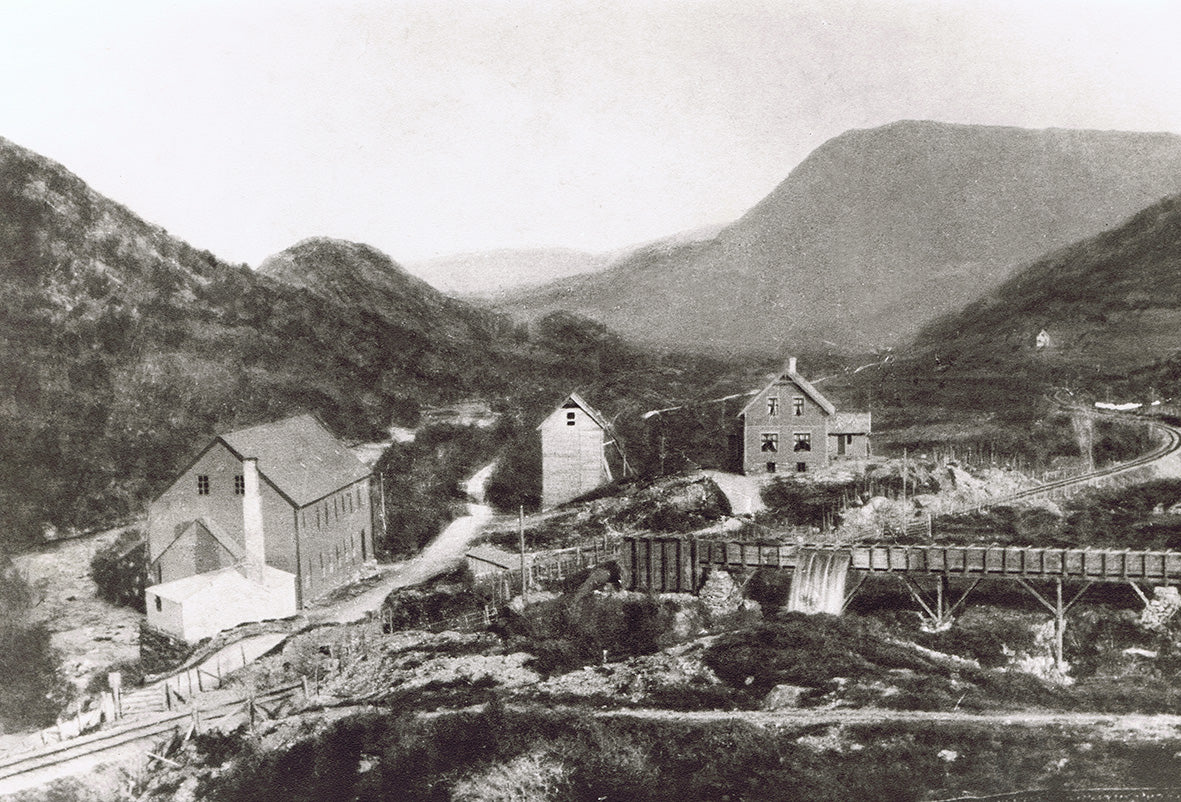It was mainly the availability of hydropower that led Anton S. Stephansen to choose Espeland as the location for his industrial activities.
The factory was built in 1895
The factory building for Espelandsfos Spinderi and Trikotagefabrik was completed in 1895. Stephansen immediately set about building housing for the workers. Right from the start, the building was called "Boligen" among the employees.

The workers also needed both food and other goods. In the beginning, this need was solved by one of the employees starting a small shop in one of the living rooms in "Boligen". But as early as 1896, the clientele had expanded to such an extent that a shop was established on the first floor of its own building.
This was the start of the local community that was to grow in Espeland.
Turnover and recognition
In the course of 1897, turnover began to accelerate both in Norway and in Sweden. In the same year there was a large textile exhibition in Stockholm, Stephansen exhibited his products and was awarded a bronze medal for his products.
In the summer of 1898, the great Bergen exhibition was held. Even with great competition from older and more established knitwear factories, Stephansen once again achieved a bronze medal. In this way, the products became better known at the same time as the customer circle continued to grow.
The train station at Espeland
Anton S. Stephansen now really notices that the factory's location is a disadvantage. The only time the train stops at Espeland is when the factory receives new supplies of coal.
Stephansen is now entering into negotiations with the Railway Board, which does not want to spend money on building sidings and paying a station master. So important is the railway connection that Stephansen eventually undertakes to lay sidings, build a parcel shed and keep a dispatcher at his own expense. On these terms, in 1899 he was granted permission for the Garnes train to stop morning and evening at Espeland.
This development was not only significant for the factory. The farmers and other people were also happy that the place was now linked more closely to surrounding areas, and not least to Bergen.

One of the first pictures from the knitting department at Espeland
Stephansen's sons' entry and the ragsock's journey
From the turn of the century, both of Stephansen's sons joined the business. They contributed not only their labor but also initiative and new ideas. In the main, it was underwear that the factory had concentrated on. The machine park also opened up the possibility of knitting sweaters in wool.
In 1903 trial production of a completely new product was started: Raggsokken. Six small flat knitting machines were all that were put in to produce the new product. "Raggen" quickly became a sought-after commodity, and more machines had to be put into use to cover the demand. Beyond the 1920s, it turns out that rag socks don't just win Norwegians' hearts. Swedes, Danes, Icelanders and Germans press the warm woolen stocking to their chest.

There was also a need for greater spinning capacity, and an expansion seems to be the only sensible thing to do. In 1905, Stephansen begins an expansion of the factory. An extension facing the river is being erected. Here, space is made for two spinning chairs with carding machines.
Now the machine park consists of: rag knitting machines, stocking knitting machines, new modern circular knitting machines and dyeing. The factory at Espeland had grown significantly during the 20 years that had passed since its establishment in 1895.




